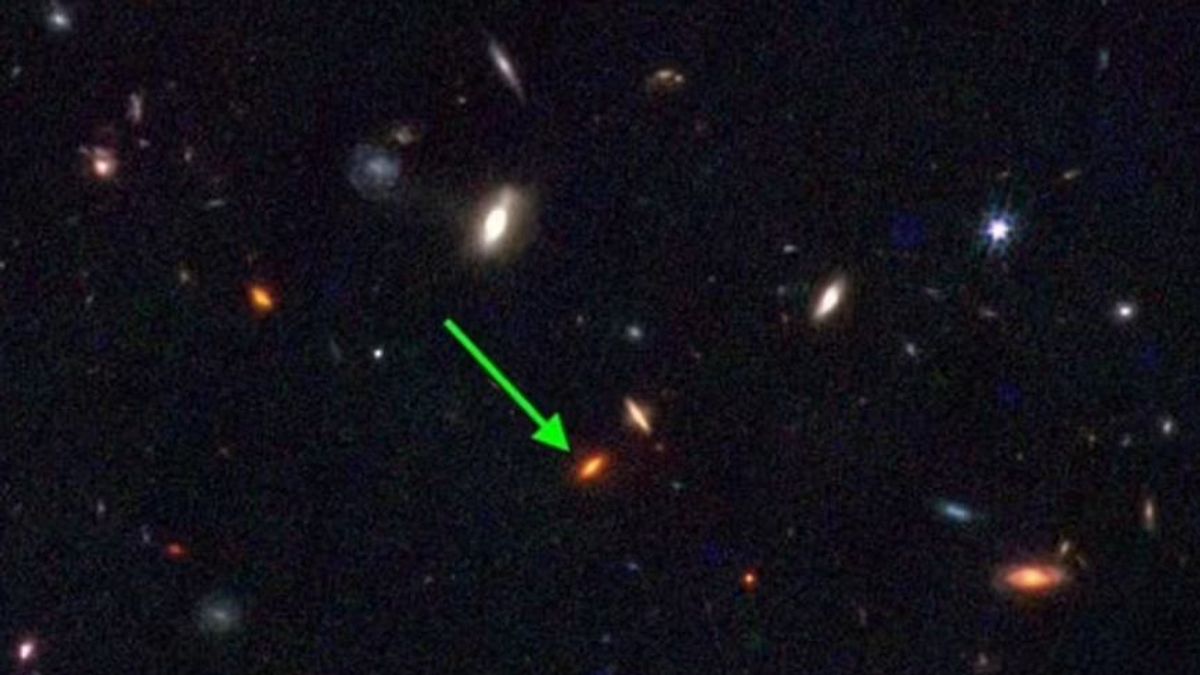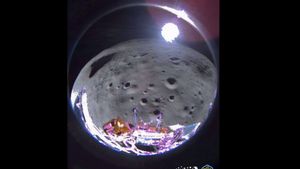JAKARTA - Astronomers have discovered a galaxy so massive and so old that it shouldn't exist, at least according to our current understanding of how early galaxies formed.
The galaxy, named ZF-UDS-7329, contains more stars than the Milky Way and appears to have formed about 13 billion years ago.
The extraordinary thing about this discovery is that a galaxy of this size shouldn't have formed so early in the universe because dark matter doesn't exist yet, meaning a galaxy of this size shouldn't have been able to form 800 million years after the Big Explosion.
Astronomers were unable to clearly see the ZF-UDS-7329 galaxy before the James Webb Space Telescope (JWST) was launched. Now they can see that this galaxy formed about 13 billion years ago.
"We are now passing what is possible to confirm the largest quinescent monster present in the universe. This drives the limits of our current understanding of how galaxies formed and evolved," said Dr. Themiya Nanayakkara, who leads the spectral analysis of JWST data.
Our universe is about 13.8 billion years old, meaning ZF-UDS-7329 formed when the universe was still a baby, only about 800 million years old. Astronomers have long thought dark matter is important for the growth of a galaxy.
Aurora of this mysterious substance, they say, forms seeds that support the center of the galaxy and allow it to gather stars. There is one problem with ZF-UDS-7329: As far as astronomers know, dark matter does not yet exist at that time, at least not in large enough quantities to support a galaxy of this magnitude. However, this galaxy exists.
This shows a'significant gap in our understanding' of how early stars and galaxies formed, the scientists behind this discovery wrote. An article explaining this galaxy was published in the journal Nature.
Scientists have developed a technique to detect how large this shift is, which allows them to determine that the images captured by JWST are likely to be around 11.5 billion years old.
SEE ALSO:
The stars likely formed about 1.5 billion years before that, the researchers wrote, meaning the galaxy was about 13 billion years old.
Scientists have been trying to get a clear picture of this galaxy for seven years, but it's so far away and so dim that even the largest telescope on Earth can't get a clear enough picture to measure its age. But with JWST, they can eventually.
The formation of galaxies is largely determined by how dark matter concentrates, said study co-author Claudia Lagos, professor of astronomy at the University of Western Australia, in a statement. The way galaxies form is the area of fundamental study in astronomy.
While it's hard to say exactly what the early universe would be like, modern astrophysicists have built many models that use current data to make predictions about it.
One of these predictions, for which astronomers tend to agree, is that there are fewer and fewer supermassive galaxies getting further and further back in time. This new observation of ZF-UDS-7329, if accurate, casts doubts on these models.
The availability of these very massive galaxies so early in the universe poses significant challenges to our standard cosmological model, Lagos said, quoted by DailyMail. This is because we don't think that such massive dark matter structures as those hosting these galaxies have had time to form."
Further observations are needed to understand how common these galaxies are and to help us understand how massive these galaxies are, he added.
The team's next step is to find more galaxies like this, to confirm these findings and find answers to how it happened.
The English, Chinese, Japanese, Arabic, and French versions are automatically generated by the AI. So there may still be inaccuracies in translating, please always see Indonesian as our main language. (system supported by DigitalSiber.id)


















